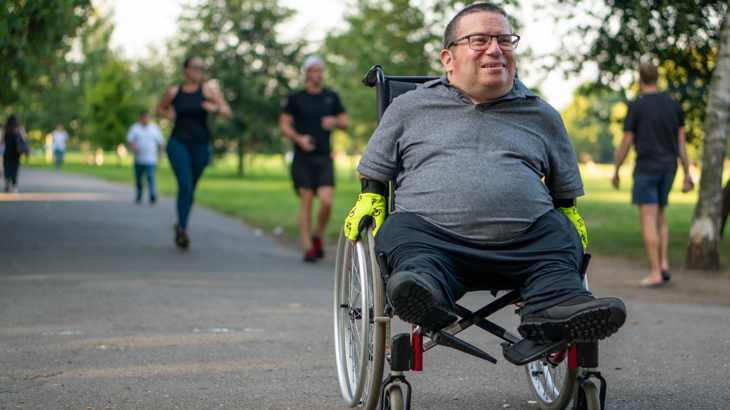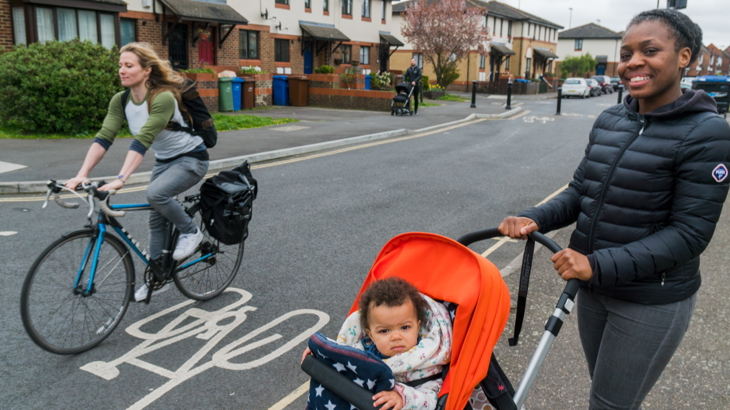We've teamed up with Living Streets and ARUP to create a guide to support people in local government, the transport sector and spatial planning, to make walking and wheeling a more inclusive activity for everyone.

Walking and wheeling in urban areas can be challenging to disabled people. Pavements are often cluttered with obstacles which make journeys much longer than necessary. Photo: Elliot Manches, Centre for Ageing Better
We believe everyone should have the right to walk and wheel and feel safe, comfortable, and welcome while doing so.
However, for many people walking or wheeling can be hugely challenging, even just to reach the local corner shop.
Together with ARUP, an independent team of specialists working across the built environment sector, and Living Streets, the UK charity for everyday walking, we've created a guide to making walking for everyone.
This guide is designed to support national and local governments including transport and spatial planning professionals, organisations helping to improve the lives of people who may be marginalised, and anyone helping to make walking and wheeling more inclusive.

Walking for everyone: A guide for inclusive walking and wheeling
Download the Walking for everyone report
Text-only version
Download the Walking for everyone report (Text only version 132 KB docx)
Walking is often ignored in transport policy
One reason may be that transport policy has typically served the needs of people that are more likely to be privileged.
However, the walking and wheeling environment in many places does not work for everyone.
For example, cars, cycles and e-scooters are increasingly encroaching on pavement space.
Our research found 72% of disabled people would find fewer cars parked on the pavement useful to walk or wheel more.
Despite almost every journey starting and ending with walking or wheeling, we neglect to make our streets accessible, safe and inclusive.
We need Government action to give pavements back to people.
With the right political will, investment and knowledge walking and wheeling can give people from all backgrounds, ethnicities, ages, abilities and genders, independence, and freedom.

Women make up 51% of the UK population, however their journeys are often ignored in transport planning where a focus on commuting exists.
Our recommendations
This guide outlines a series of recommendations for local and national governments under three themes:
1. Improving governance, planning and decision making
We need:
- inclusive walking and wheeling plans and long-term funding
- policy decisions are based on diverse voices and better data
- to ensure people live within walking distance of the services and amenities
- to invest in and fully integrate walking and public transport.
2. Creating better places for everyone to walk and wheel in
We need:
- national design guidance for walking and wheeling
- to improve road safety, air quality and reduce physical severance by roads
- to ensure pavement space is reserved for people
- to prioritise personal safety.
3. Supporting everyone to walk and wheel
We need:
- to raise the profile of walking and wheeling
- to invest in walking and wheeling programmes, including social prescribing
- Reverse the decline in childhood independent mobility
- close the disability mobility gap (the gap in journeys by disabled and non-disabled people).
Download the Walking for everyone report (5 MB pdf).
Download the text-only Walking for everyone report (132KB docx file).
Take a look at our guide for creating inclusive cycling in cities and towns.






